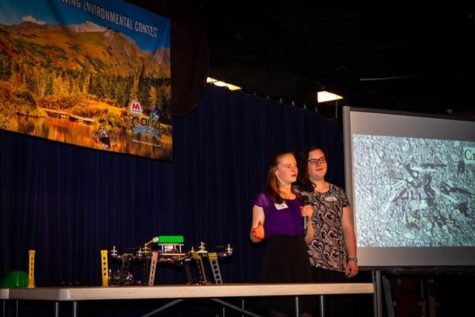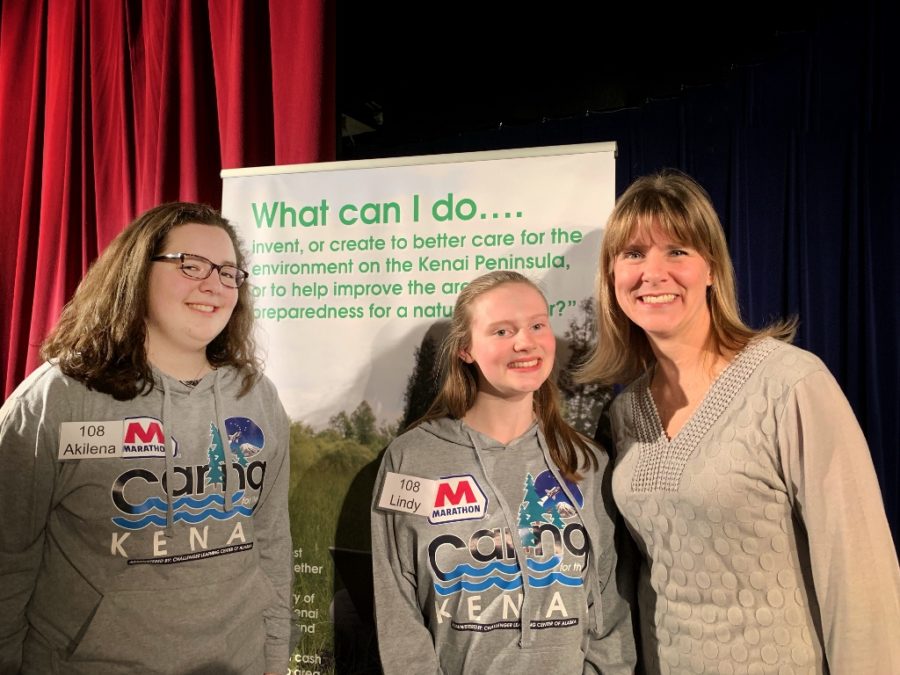Veach and Guernsey Finish 2nd in CFK
Akilena Veach (left) and Lindy Guernsey (middle) earn 2nd place in the Caring for the Kenai competition. Jennifer Swander (right) is their writing and speech coach. George Reising (not pictured) is their science teacher and project coordinator.
April 29, 2019
Lindy Guernsey and Akilena Veach recently competed in the 29nd annual Caring for the Kenai competition. The contest, which is sponsored by the Challenger Learning Center and Marathon Oil and Gas, encourages high school students to create ideas to better care for the environment or increase natural disaster preparedness on the Kenai Peninsula.
Along with winning second place overall, they were awarded $1,100 in prize money. In addition, thousands of dollars will go to the Seward High School science program.
Guernsey and Veach, who have been working with their environmental science class and the flood board, use unmanned aerial vehicles (UAVs), commonly known as drones, to map flood-prone areas in Seward.
Veach explained the process to enter the contest as “first you have to write a paper on your idea…then the top twelve papers go on to the oral presentation.”
In their essay, they wrote about programming UAVs to fly over and take images of places like Japanese Creek, so they can create digital maps. In turn, the flood board uses these maps to measure changes in watersheds over time and assess neighborhood needs. Guernsey and Veach wanted to emphasize how high school students can gain valuable learning experience from such a project, while also saving the flood board thousands of dollars.

Lindy and Akilena present their project during the final competition.
After finding out they made the top twelve, they had one month to prepare a five-minute presentation, which would be scored by several judges. They created a humorous moment in the beginning of the presentation as Guernsey powered up and pretended to start flying a hexarotor drone–one much too large to fly indoors. In the next few minutes, the girls passionately shared the dynamics of the project, including how they partnered with a student in their engineering class. Since the weather poses flying problems, they asked their classmate Tate Barhaug to use Autocad to design and 3D print an enclosure to protect electronic elements.
On April 18th, the day of the final presentations, both girls were also competing at the State FAA convention in Wasilla. Veach explained, “I had my last FAA speech at 2:30. Then we got on a plane and flew to Kenai to present at 5:00.” Turns out, that flight was definitely worth it.






Kamryn Pack • May 3, 2019 at 9:08 am
You guys are doing so well! I’m so proud of you guys, keep it up!